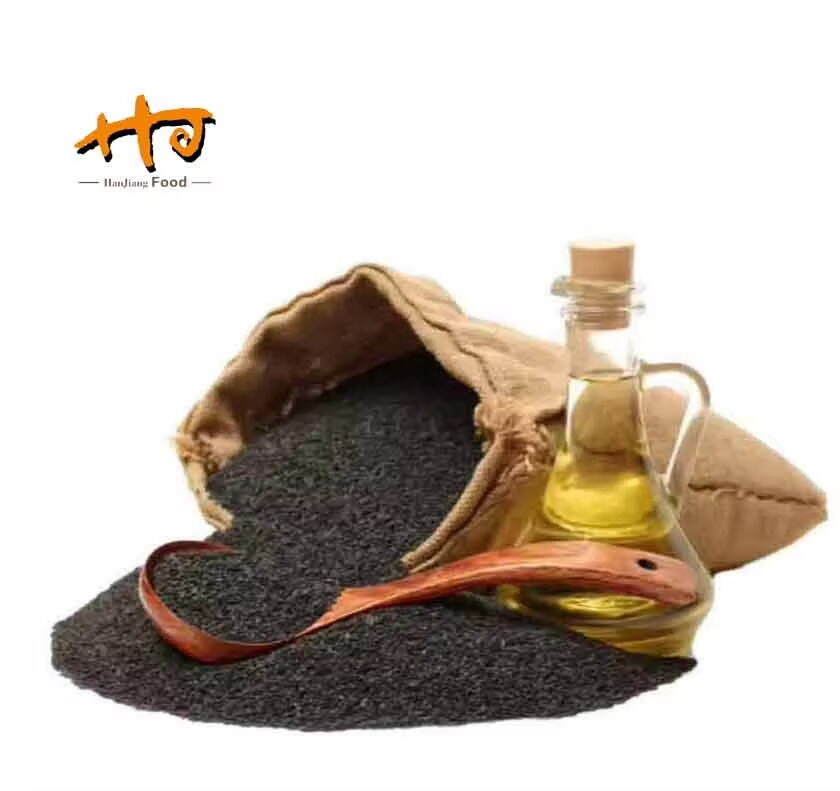Understanding Cold-Pressed Sesame Oil Basics
What Makes Cold-Pressed Different From Regular Sesame Oil?
Cold-pressed sesame oil stands out due to its unique extraction process, which preserves essential nutrients, flavor, and aroma much better than regular sesame oil. Unlike traditional methods that often rely on heat or chemical treatments, cold pressing involves mechanically extracting the oil at low temperatures. This ensures that the oil retains the sesame seed's natural qualities, contributing to its rich and robust taste. In contrast, high temperatures in regular extraction can lead to a loss of beneficial compounds, making cold-pressed oil a superior choice for those seeking more health benefits. Furthermore, the chemical composition of cold-pressed sesame oil is notably different; it maintains higher levels of antioxidants and polyunsaturated fatty acids compared to refined varieties, resulting in a distinct taste profile.
Key Nutritional Components of Cold-Pressed Variants
Cold-pressed sesame oil is a nutritional powerhouse, offering a rich array of essential fatty acids, vitamins, and antioxidants. It typically contains around 14 grams of fat per tablespoon, with polyunsaturated fats making up about 6 grams, complemented by monounsaturated fats and saturated fats. This composition supports cardiovascular health and helps in managing cholesterol levels. Moreover, cold-pressed sesame oil is enriched with Omega-3 and Omega-6 fatty acids, known for reducing inflammation and promoting heart health. Vitamin E, another critical component, acts as a powerful antioxidant that bolsters skin health. According to studies, incorporating such nutrient-dense oils into the diet can significantly enhance overall well-being, contributing to better heart, skin, and digestive health.
Top 10 Essential Questions for Buyers
Is It 100% Pure and Unrefined?
When purchasing cold-pressed sesame oil, understanding its purity and whether it's unrefined is crucial. Pure sesame oil means that it's free from additives and preservatives, retaining the original nutrients. Unrefined oil is minimally processed, ensuring the authentic flavor and health benefits are preserved. To guarantee purity, look for certifications such as USDA organic or non-GMO labels, which instill confidence in buyers seeking genuine product quality.
What’s the Source of Sesame Seeds?
The origin of sesame seeds significantly impacts the quality of the oil. Different regional varieties can enhance the oil's flavor profile, with some regions known for producing superior seeds. Sustainable sourcing practices are essential as they not only affect the oil's taste but also contribute to environmental preservation. By supporting ethically sourced sesame seeds, buyers can enjoy a richer flavor while promoting ecological responsibility.
Is It Certified Organic or Non-GMO?
Organic and non-GMO certifications are vital for consumers prioritizing health and environmental awareness. These labels confirm the absence of synthetic chemicals and genetically modified organisms, offering peace of mind. Organizations such as USDA provide these certifications, ensuring that the product meets high standards for safety and quality, which is especially important for health-conscious buyers.
Which Extraction Method Is Used?
The extraction method greatly influences the oil's flavor, nutritional value, and overall quality. Cold-pressing is favored for maintaining the natural taste and nutrients of sesame oil due to its low-temperature process. This method contrasts with others that may involve heat, which can diminish the oil's beneficial properties. Therefore, choosing cold-pressed sesame oil ensures a superior culinary and health experience.
Does It Retain Natural Aroma and Flavor?
Cold-pressed oils are prized for preserving their natural aroma and flavor, making them distinct from refined versions. Consumers can expect a robust and authentic taste with high-quality cold-pressed sesame oil, enhancing the sensory experience of dishes. This retention of essence allows the oil to convey the true richness of sesame seeds in every culinary Application.
How Is It Packaged to Preserve Freshness?
Effective packaging is essential in maintaining the quality of cold-pressed sesame oil. Materials like glass are preferred over plastic as they better protect the oil from contamination. Furthermore, packaging designs, such as dark bottles, safeguard the oil from light and air exposure, extending its freshness and preventing degradation over time.
What’s the Shelf Life and Storage Requirements?
Cold-pressed sesame oil typically has a shelf life of about six months from the manufacturing date. Factors like light, temperature, and humidity can affect its longevity. To maintain freshness, store the oil in a cool, dry place, away from direct sunlight, and keep the bottle tightly sealed to prevent rancidity.
Are There Additives or Preservatives?
Some lower-quality sesame oils may contain additives or preservatives that compromise health benefits. When buying, check labels to ensure the product is pure and free from artificial ingredients. Choosing oils devoid of additives ensures consumers receive the full nutritional profile and authentic flavor of sesame oil without unwanted chemicals.
Is It Suitable for High-Heat Cooking?
Cold-pressed sesame oil has a smoke point of 410F (210C), making it suitable for certain cooking methods. It excels when used for dressings and light sautéing, where its rich flavor is best appreciated. For techniques requiring higher temperatures, refined oils might be more appropriate, as they withstand heat without breaking down.
What Certifications Guarantee Quality?
Quality certifications such as USDA organic or non-GMO are crucial markers that buyers should seek. These certifications build consumer trust and influence purchasing decisions by ensuring the product meets rigorous standards for safety and purity. Recognizing reputable certifications assures customers of the oil's authenticity and quality, encouraging informed and confident buying.
Evaluating Quality Indicators
Importance of Organic Certification
Securing organic certification when purchasing cold-pressed sesame oil is essential as it guarantees the oil is produced without synthetic pesticides, fertilizers, or genetic modification. This not only ensures the oil is free from harmful chemicals, enhancing its health aspects, but also supports environmentally sustainable farming practices. Research indicates that organic oils can offer superior health benefits, such as improving heart health and reducing exposure to residual chemicals found in conventional oils. Consumers like knowing that their choices make a positive environmental impact.
Interpreting Extraction Process Labels
Understanding the different labels on sesame oil regarding the extraction process is crucial for making informed purchasing decisions. Labels specifying "cold-pressed" indicate that the oil was extracted through mechanical processes at low temperatures. This method helps retain the natural flavor, aroma, and nutritional properties of the oil, which distinguishes it from "expeller-pressed" oils that may involve higher temperatures and result in nutrient loss. When shopping for cold-pressed sesame oil, always choose Products clearly marked as cold-pressed to ensure you're getting a truly quality product with maximum health benefits.
Recognizing Authentic Cold-Pressed Characteristics
Authentic cold-pressed sesame oil can be identified by certain distinct characteristics that differentiate it from other oils. Firstly, the color of cold-pressed sesame oil is generally darker and more vibrant, reflecting its rich nutrient content. Its viscosity is thicker compared to refined oils, which tend to be lighter and thinner. Furthermore, a robust nutty taste indicative of natural flavors and a slightly bitter undertone are signs of a high-quality product. When evaluating sesame oils, these sensory qualities—color, viscosity, and flavor—serve as important markers of authenticity and quality, ensuring the selection of a superior product.
FAQ
What is cold-pressed sesame oil?
Cold-pressed sesame oil is extracted mechanically at low temperatures to preserve the natural nutrients, flavor, and aroma of sesame seeds, unlike regular oil extracted using heat or chemicals.
What are the health benefits of cold-pressed sesame oil?
It supports cardiovascular health, helps manage cholesterol levels, reduces inflammation, promotes heart health, and boosts skin health due to its rich fatty acids, vitamins, and antioxidants content.
Can I use cold-pressed sesame oil for high-heat cooking?
Cold-pressed sesame oil has a smoke point of 410F (210C), making it suitable for light sautéing and dressings, but not ideal for high-heat cooking methods.
How should I store cold-pressed sesame oil?
Store it in a cool, dry place away from direct sunlight and keep it in a tightly sealed container to prevent oxidation and preserve freshness.
What certifications should I look for when buying sesame oil?
Look for certifications like USDA organic or non-GMO to ensure the oil's purity, safety, and adherence to high-quality standards.
Table of Contents
- Understanding Cold-Pressed Sesame Oil Basics
- Key Nutritional Components of Cold-Pressed Variants
-
Top 10 Essential Questions for Buyers
- Is It 100% Pure and Unrefined?
- What’s the Source of Sesame Seeds?
- Is It Certified Organic or Non-GMO?
- Which Extraction Method Is Used?
- Does It Retain Natural Aroma and Flavor?
- How Is It Packaged to Preserve Freshness?
- What’s the Shelf Life and Storage Requirements?
- Are There Additives or Preservatives?
- Is It Suitable for High-Heat Cooking?
- What Certifications Guarantee Quality?
- Evaluating Quality Indicators
- FAQ

 EN
EN
 DA
DA
 AR
AR
 NL
NL
 FI
FI
 FR
FR
 DE
DE
 EL
EL
 HI
HI
 IT
IT
 JA
JA
 KO
KO
 NO
NO
 PL
PL
 PT
PT
 RU
RU
 ES
ES
 SV
SV
 TL
TL
 ID
ID
 SR
SR
 UK
UK
 VI
VI
 HU
HU
 TH
TH
 TR
TR
 FA
FA
 AF
AF
 MS
MS
 GA
GA
 MK
MK
 HY
HY
 KA
KA
 BN
BN
 LA
LA
 MN
MN
 NE
NE
 MY
MY
 KK
KK
 UZ
UZ
